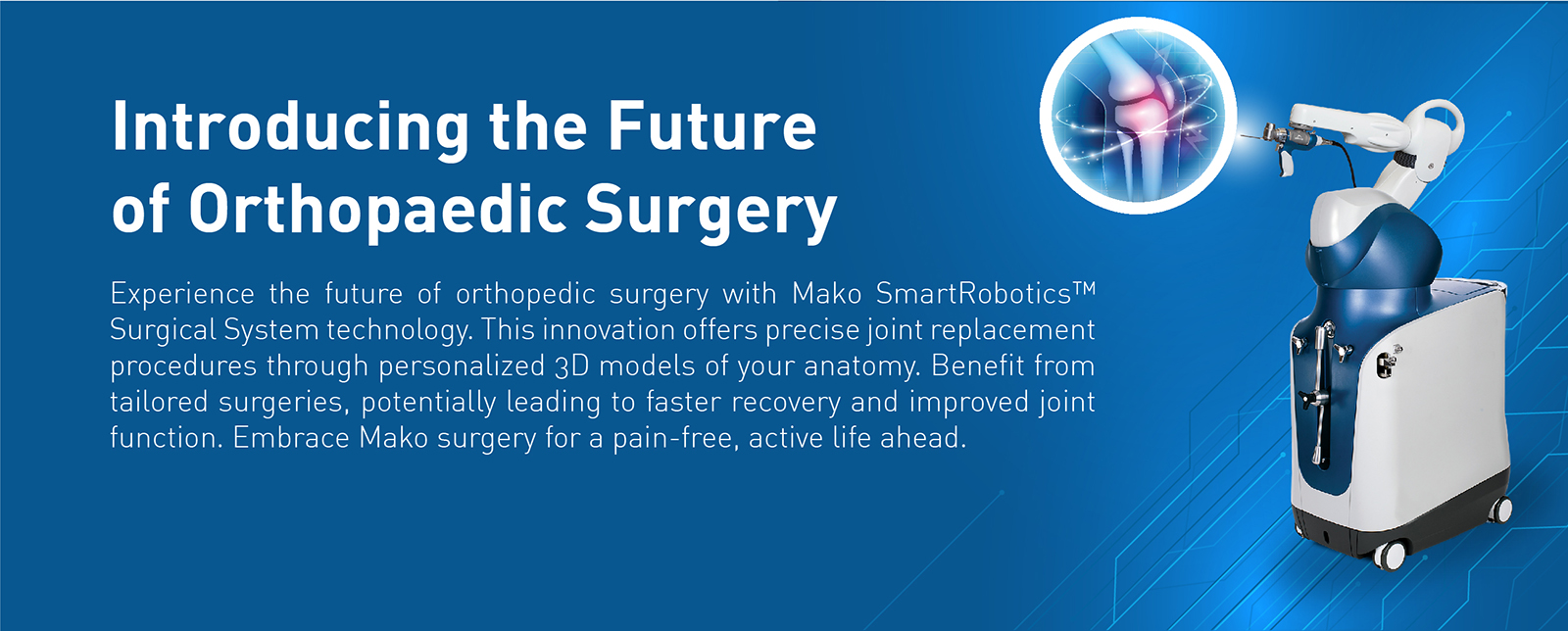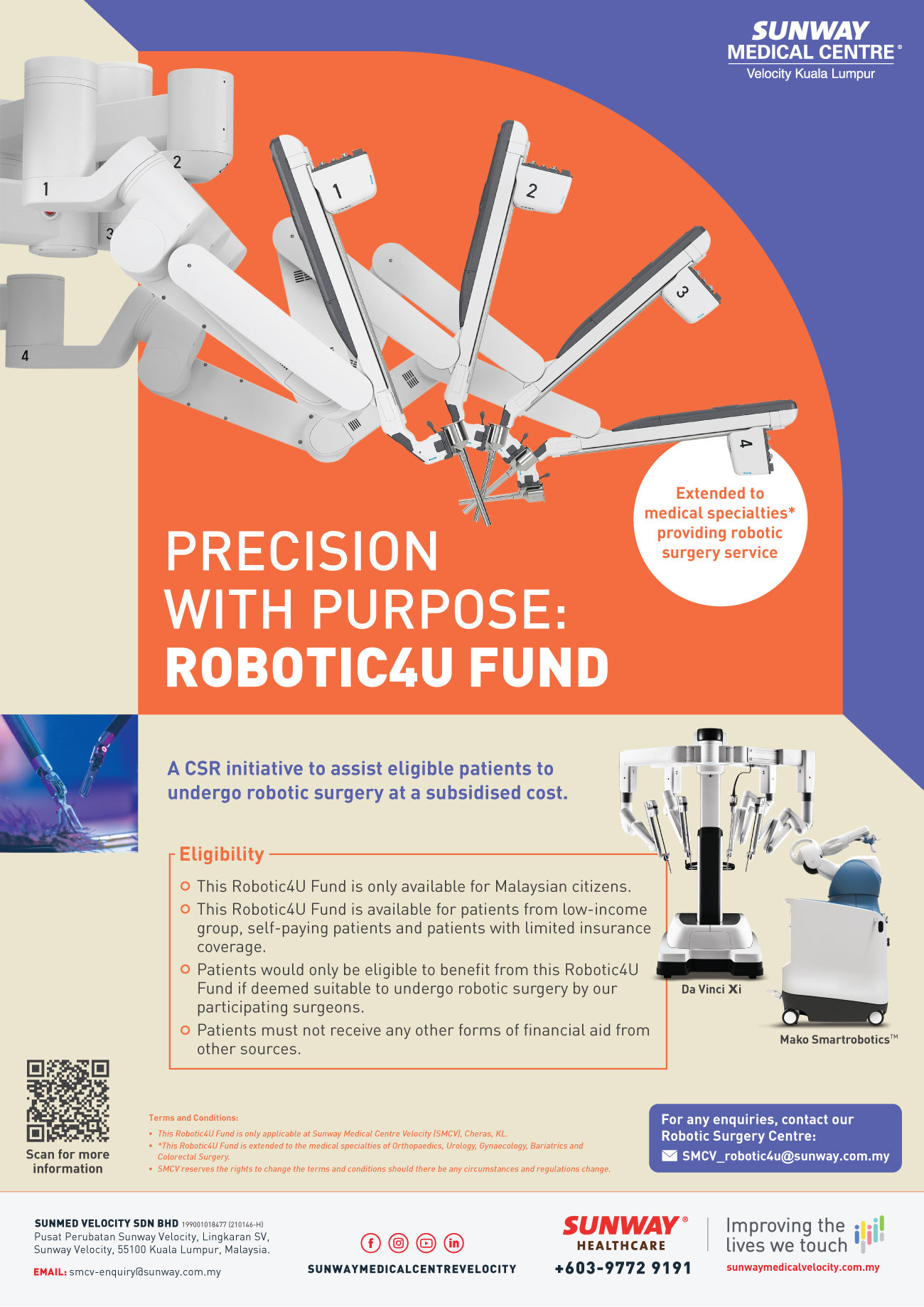FAQ
Who can have Mako SmartRobotics™ Surgical System robotic arm assisted surgery?
Mako SmartRobotics™ Surgical System is typically recommended for individuals who require orthopedic procedures, particularly joint replacements such as knee or hip surgery. Candidates for this advanced technology often include patients suffering from conditions like osteoarthritis, rheumatoid arthritis, or other degenerative joint diseases that affect the hip or knee. Additionally, individuals who have experienced joint damage due to injury or trauma may also benefit from Mako SmartRobotics™ Surgical System.
Are there any risks associated with Mako SmartRobotics™ Surgical System robotic arm assisted hip and knee surgery?
All surgery carries risks and your surgeon will discuss the risks of joint replacement during your pre-surgical consultation. Clinical studies show Mako can help to reduce certain risks including more accurate alignment of KNEE/hip implants based on the surgical plan, a reduced risk of blood loss and less likelihood of hip dislocation.
Does the robotic arm perform the surgery?
No. The robot serves as a precise tool that assists the surgeon. It does not independently perform the surgery. Surgeons guide the robotic arm based on real-time feedback. Experience and expertise are crucial for achieving optimal outcomes in robotic-assisted Total Knee Arthroplasty (TKR). Surgeons must balance the knee joint and meticulously plan the procedure using the MAKO templating system based on 3d scanning (CT scan) prior to operation. This combination of technology and surgical skill contributes to improved precision and patient satisfaction.
What about the recovery time?
With the use of this technology, many patients find that they have a shorter recovery time. This can depend on other factors. However, most patients can be walking again within the first day or two and get back to their normal routine within six weeks. Typically, most patients will only spend one night or two in the hospital to ensure they are monitored closely in the initial hours after the operation. This is because the technology is more precise, tailored to the specific patient’s individual body, and is less invasive during the operation. Of course, care and attention still need to be taken to ensure a successful recovery.
Am I too old for a joint replacement?
Age alone is not the sole determining factor for whether someone is a candidate for joint replacement surgery. While older adults may face certain health considerations, such as decreased bone density or existing medical conditions, many individuals in their later years successfully undergo joint replacement procedures and experience significant improvements in their quality of life. The decision to proceed with joint replacement surgery is typically based on various factors, including the severity of joint pain, level of joint dysfunction, overall health status, and the individual's goals and expectations for surgery.. Further discussion with the doctor on multiple factors will determine whether joint replacement is right for you.

















